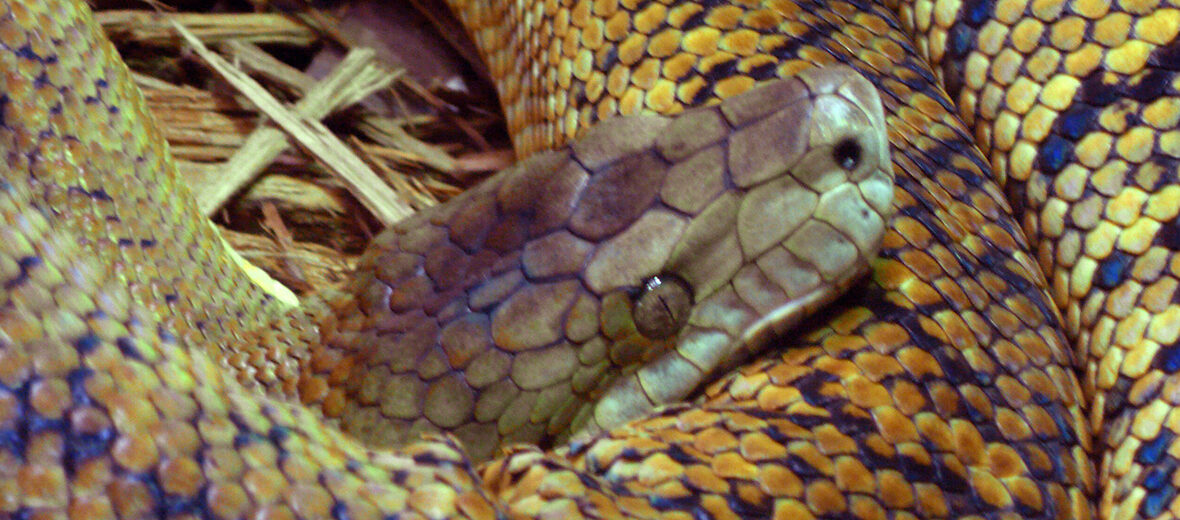
The Jamaican boa, aka Jamaican yellow boa, yellow snake, or nanka – Jamaican Patois, while once prevalent throughout Jamaica can now be found only in the Cockpit Country, which is in the central/western part of the island of Jamaica. These snakes face the threats of habitat loss and destruction at the hands of logging, mining, and quarrying; hunting; trapping; and invasive species, & with them predation. The IUCN lists these boas as Vulnerable. Their population is also decreasing.
First the Stats…
Scientific name: Chilabothrus subflavus
Weight: Up to 11 lbs.
Length: Up to 6.7 feet
Lifespan: Up to 20+ years
Now on to the Facts!
1.) Just like all boas, these snakes are nonvenomous constrictors.
2.) Jamaican boas are nocturnal (active at night), but also display occasional crepuscular (active at dawn and dusk) activity.
3.) These boas are arboreal (spend most or all of their lives in trees).
4.) During the daylight hours they find shelter in a variety of locations like epiphytes, trees, rock crevices, termite nests, or caves. They have been seen at the far end of Portland Cave.
5.) They have also been documented on some of the smaller islets of Jamaica, such as Goat Island.
But wait, there’s more on the Jamaican boa!
6.) Their population took a large dive due to the introduction of the Indian mongoose.
7.) After detailed island-wide surveying, these boas have also been found in various parishes such as Hanover, St. Anne, Trelawny, and Westmoreland.
Did you know…?
The snakelets measure up to 19.69 inches at birth.
8.) Primary strongholds for these boas now seems to be Blue Mountains, Cockpit Country, Hellshire Hills, Portland Bight, and Yallah Mountains, which together accounts for approximately 93% of the known habitat of this species.
9.) Mice, rats, bats, and various birds – including chickens and parrots – are readily consumed.
10.) Females are ovoviviparous (have live birth) and will birth up to 44 live snakelets each season.
Now a Short Jamaican Boa Video!
Be sure to share & comment below! Also, check out the Critter Science YouTube channel. Videos added regularly!
Want to suggest a critter for me to write about? Let me know here.
Some source material acquired from: Wikipedia & IUCN
Photo credit: Tim Vickers




